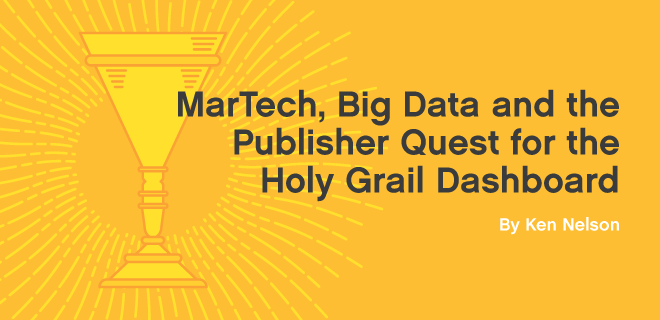
There are a couple new players in town, quietly but dramatically changing the way the marketing/advertising ecosystem uses big data. Marketing technology and system integrators have been rapidly expanding first-party offline data sets, based on the business intelligence data sets that have powered brands for years.
These massive data pools are now being used to power digital ads and all other cross-channel marketing tactics, TV included. Likewise, these same data pools are now fueling MarTech dashboards, evaluating inter-campaign marketing and media mix model effectiveness, tying back to offline sales. Yes, my friends—the train has left the last-click station.
The Perfect Data Storm
The pools of first-party data for both targeting and measurement are expanding as CRM and ERP (enterprise resource planning) systems are on-boarded, along with real-time purchase history, into the marketing ecosystem by system integrators (Accenture, Deloitte, McKinsey, etc.) and the new breed of hybrid CRM/DMP players (Acxiom/LiveRamp, Salesforce/Krux, Oracle/BlueKai). With increased innovation, the adoption of programmatic TV buying, and the continued proliferation of smart TVs/OTT players, data can now drive ads on all screens.
Then, of course, you combine social players like Facebook and Snapchat, each of which has a unique identifier for everyone using their platforms. All of that now puts the marketer in a position to unify all the buying and offline measurement back to the individual consumer target.
The Marketer, Not Big Brother, Knows Everything About You
The MarTech players are taking attribution a huge step forward, as advertisers demand more cross-channel marketing be measured through one central dashboard. The biggest challenge here is defining a unique ID of all consumers exposed to all marketing tactics of a campaign. Sure, there’s a fair amount of plumbing and scrubbing that needs to be done here to make this all come together—but given the new players in the space (and the history of bridging disparate data systems together to drive business intelligence), you can bet your bottom dollar this is already happening.
Marketing Mosh Pit and the Holy Grail Dashboard
Gone are the days where media mix models and spend levels were set on an annual basis. They’re beginning to be evaluated quarterly, and even on an inter-campaign basis. What’s so exciting here is how marketers (agencies) will have transparency across all tactics, and other agencies’ efforts, to see how multiple channels are collectively moving the needle. Does a TV buy coupled with paid social drive more CPG sales than a TV buy with shopper marketing incentives? Is the creative messaging driving enough brand sentiment to lift sales? Is my influencer marketing actually driving action with my customers? What is the engagement time with my ad tactics, and how is this driving offline sales?
Getting these questions answered, especially inter-campaign, will break down traditional walls between a brand’s agencies. With respect to digital, it will result in more shifts to programmatic media buying, rather than upfront commitments, in order for agencies to make more dynamic changes to digital tactics based on new measurement data.
Payday for Digital Publishers
For the most part today, efficiency for digital ad campaigns is measured by last click, last view, completed view (or, for some, a two-second video view), and/or simple surveys forced on users during their content consumption. Tomorrow, it will be about time engaged with the target user, and how the effectiveness of all advertising (ads and content) moves the needle on offline sales and action.
The Holy Grail dashboard, unifying cross-channel marketing and media mix model effectiveness, will justify a stronger value for engagement time. This is a much-needed blessing for digital publishers to move up in the funnel with more engaging and rich media ads that capture the attention of consumers. Likewise, as first-party data target pools expand, publishers will drive incrementally more value, as they’ll be able to offer more overlap with their inventory and PMP deals. This, coupled with playing in the mid/upper-funnel space with rich media units, will allow publishers to have their inventory valued well beyond a click.